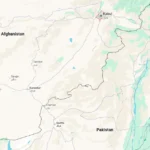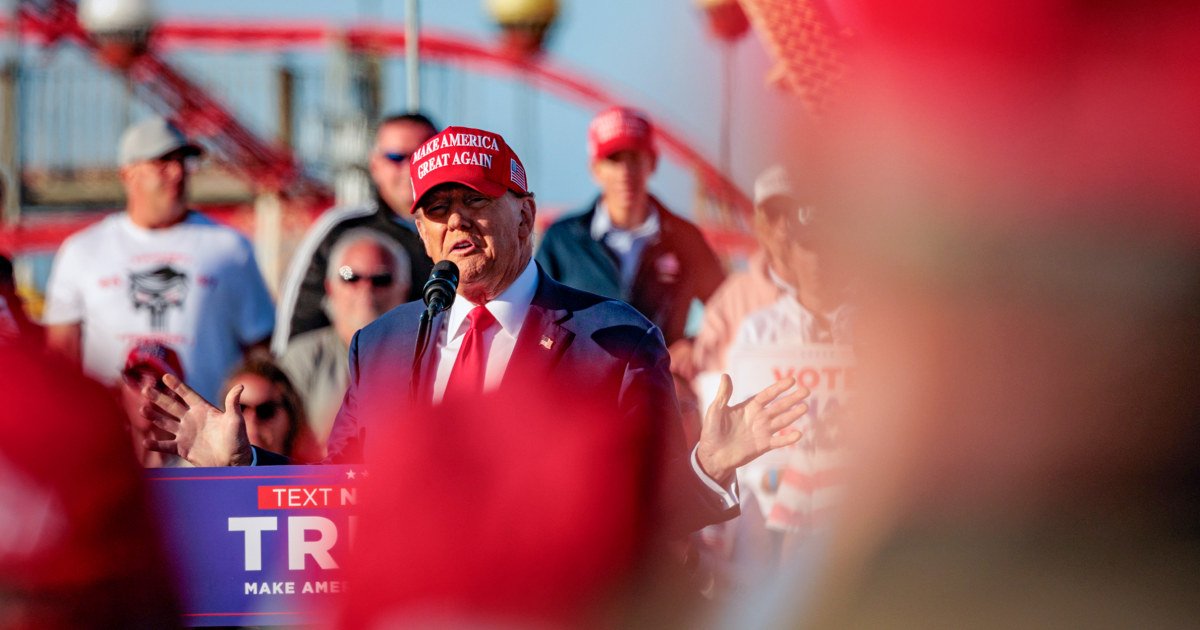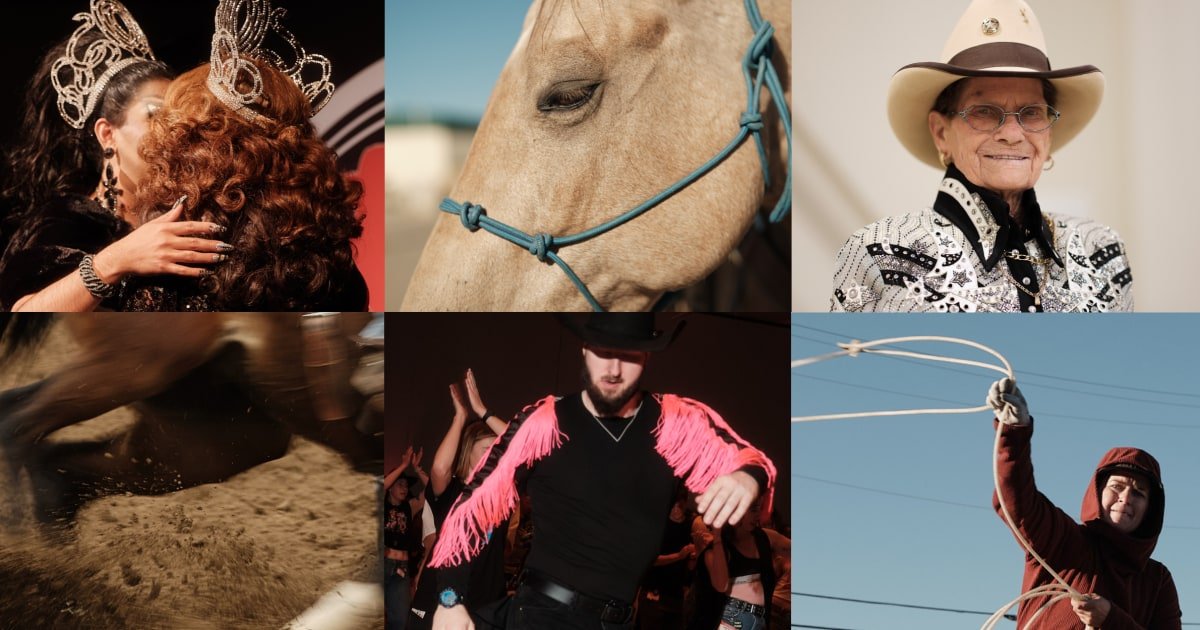New Jersey produced some of the most dramatic coalition changes in the country in the 2024 presidential election. Now, those changes are setting the stage for this year’s tight gubernatorial race — and big questions nationally about where communities like these are headed in future elections.
For starters, President Donald Trump’s surge among non-white voters in the New York City metropolitan area in 2024 took much of the political world by surprise. But questions remain about whether Republicans will be able to sustain this coalition in the long term.
An analysis of municipal-level election results in New Jersey, along with data from the U.S. Census Bureau, provides a detailed demographic and geographic snapshot of where Democrats and Republicans have grown their support most rapidly in recent elections. Examining changes since 2012 (the most recent presidential election without Trump on the ticket), a clear picture emerges of shifting partisan coalitions.
Support for Trump has soared in densely populated and largely non-white, formerly industrial cities such as Paterson, Perth Amboy and Passaic in the New York City metropolitan area. Republican growth that had been developing slowly since 2012 increased dramatically in 2024.
Meanwhile, Democratic candidates have found growing strength in New Jersey’s coastal cities, affluent suburbs populated by college-educated professionals and places popular with retirees.
These communities will become crucial laboratories in the future, testing whether this 12-year political realignment can outlast Trump.
But the picture will be far from clear, and different political figures often encourage different political outcomes. Republican Jack Ciattarelli’s previous bid for New Jersey governor in 2021 produced a close race, but he did so with a coalition that looked very different from the one that would emerge for Trump in 2024.
The bigger question heading into future elections is whether these changes represent a lasting transformation of state (and national) politics or simply a Trump-specific phenomenon. These communities provide a testing ground for the response.
The biggest changes towards the Democrats
The biggest changes since 2012
More than half of this quasi-residential coastal town of 331, located 2 miles south of the last stop on NJ Transit’s Jersey Shore train line, work in financial or administrative jobs. The population working from home is also well above the state average: 45% in Mantoloking, compared to 13% statewide. The median household income was $484,326 and the median sales price of the 10 homes sold in this municipality in 2024 was $4.8 million.
It is still Republican territory, but not to the same extent as it was before Trump, exemplifying the changes among wealthier and more educated voters.
This location is perhaps most famous among New Jerseyans for its shopping center of the same name, The Mall at Short Hills. Originally opened in 1961 with the motto “Fifth Avenue in the suburbs,” the mall and the area around it have become that ambitious billing.
Today, Short Hills has a median household income of $512,637, the second highest in the state. Among residents age 25 and older, 60% have advanced degrees, the highest proportion for any place its size in the state. Asian residents make up 38% of the population, and half of them are American Indians.
The biggest changes since 2016
This is another small coastal town, the furthest you can get from the Jersey Shore, at the southern tip of the Jersey Peninsula. Almost all of the shops and restaurants are in the larger town of Cape May, 10 minutes east, but this largely residential community has a large senior population, with a median age of 70.9 years. The home value is $1.4 million and is in the top 10 in South Jersey.
Located on the banks of the Delaware River in western New Jersey, Frenchtown is a quaint river town and popular day trip destination known for its art galleries and boutiques. The 70-mile Delaware and Raritan Canal Trail, which begins just north of town, is popular with pedestrians and cyclists alike. A narrow bridge connects Frenchtown to rural Bucks County, Pennsylvania — itself an ever-important county in Pennsylvania politics.
One in 10 Frenchtown residents participates in “arts, design, entertainment, sports and media occupations,” the second-highest concentration in the state. (In recent years, “Eat, Pray, Love” author Elizabeth Gilbert lived and owned a store in town.) Among adult residents, 41% are white with college degrees or higher, above the average of 27% for New Jersey as a whole.
The biggest changes since 2020
Avalon has long been a thriving seaside town: Ed McMahon used to talk about his weekends there on “The Tonight Show with Johnny Carson.” Avalon now has the fifth-oldest population in the state, with a median age of 74.1 years. The median sales price of a home in Avalon last year was $2.8 million.
This planned development, a retirement community in South Jersey, was under active construction from 1971 to 1986. Leisuretowne has grown to 2,255 homes and the current median age is now 72.5 years.
The biggest changes towards the Republicans
The biggest changes since 2012
This primarily industrial neighborhood is hidden beneath the Gov. Bridge. Alfred E. Driscoll, one of the widest in the world with 15 lanes. Its accessibility to the Garden State Parkway, I-95 and the Outerbridge Crossing, which connects New Jersey to New York, make it particularly attractive to large distribution companies. FedEx has a distribution center here, as does Wakefern Food Corp., better known for its ShopRite subsidiary.
Once a primarily Polish and Hungarian neighborhood, it has seen the third-largest Latino population growth in the state over the past two decades, rising from 38% of the population in 2000 to 71% of the population in 2020. The median household income here is $91,696, below the state figure of $140,299.
A new 5-acre waterfront park opened earlier this year in this small city on the Passaic River, an important step in the revitalization of this industrial area in the shadow of Newark. Clark Thread Company, once the largest thread manufacturer in the country, had a large campus here, with the property being the main area tagged for redevelopment.
Two-thirds of the population in East Newark is Hispanic/Latino. Most do not have U.S. citizenship and speak Spanish at home, according to census data. It has the largest Peruvian population and the fifth largest Ecuadorian population by share in the US.
The biggest changes since 2016
Home to the sixth largest Latino population in the state, 73% of Passaic’s 70,000 residents are of Hispanic or Latino origin. Passaic also has the largest Mexican population in the state. The high-immigration city is firmly working class: 33% of its adult population has not graduated from high school, compared to 9% statewide.
Heading south from downtown and toward the Passaic Park neighborhood, you’ll find a large Orthodox Jewish population. While official figures on religious followers are not maintained at the municipal level, Passaic would likely have one of the largest populations of Orthodox Jews in New Jersey. Brook Haven Mall, which bills itself as “the largest kosher mall in the US,” opened in 2021, a testament to the size of the Jewish population in the immediate area.
Elizabeth, the fourth largest city in New Jersey, is an active transit hub for the New York metropolitan area. The city is home to parts of Newark Liberty International Airport, one of the region’s three major airports, and the Port Newark-Elizabeth Marine Terminal, one of the busiest container ports in the world. The Goethals Bridge also links Elizabeth directly to Staten Island, making it a key connector between New Jersey and New York City.
Like the population of East Newark, more than half of the population here was not born in the United States and almost two-thirds of the residents here are Spanish speakers.
The biggest changes since 2020
Perth Amboy’s unique clay bed made it the terra cotta production capital of the East Coast in the early 19th century. Terracotta-trimmed facades decorate the city’s buildings, and the work of the Perth Amboy Terra Cotta Company became a staple of the elegant skyscrapers built in Manhattan at the time, from the Woolworth Building to the Flatiron Building. The Great Depression caused a sudden evaporation of the terra cotta industry and the decades since have reinvented Perth Amboy.
The city is now 81% Latino, the third-highest proportion anywhere in the state. Half of its Latino population is of Dominican origin, one of the highest concentrations in the country.
New Jersey’s third largest city is a melting pot of cultures. It has the largest Dominican population outside of New York City and Lawrence, Massachusetts, and its Little Lima neighborhood represents the largest Peruvian population outside of Peru. The mayor of Paterson declared the city the American “capital of Palestine” also due to its large Palestinian population, and its overall Muslim population probably makes up at least a third of the city’s population.
At the same time, Paterson is a city in transition, with a quarter of its population living in poverty, according to census data, and some of the state’s highest crime rates per capita.









